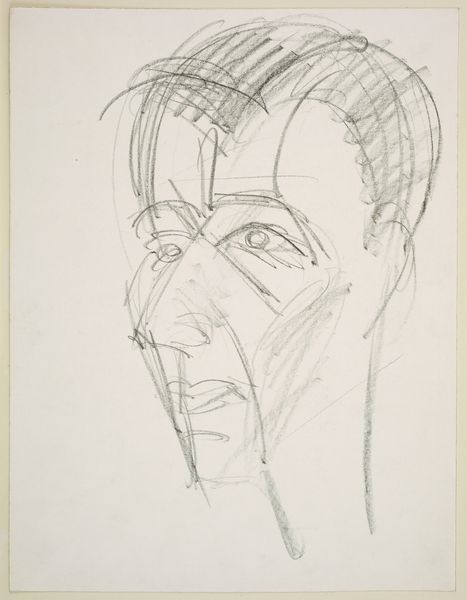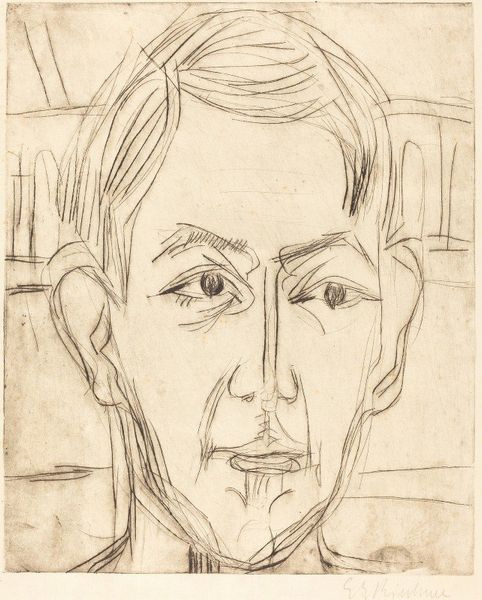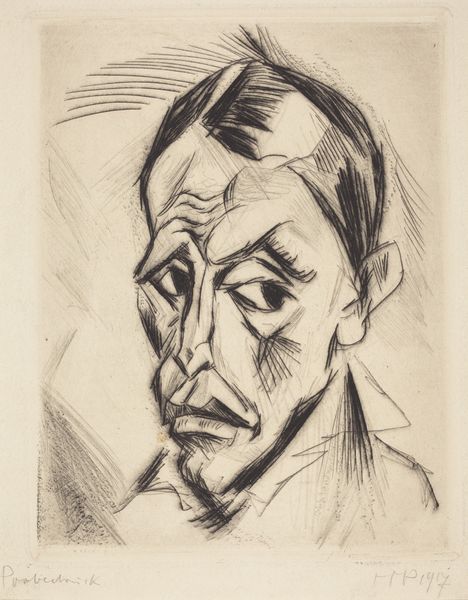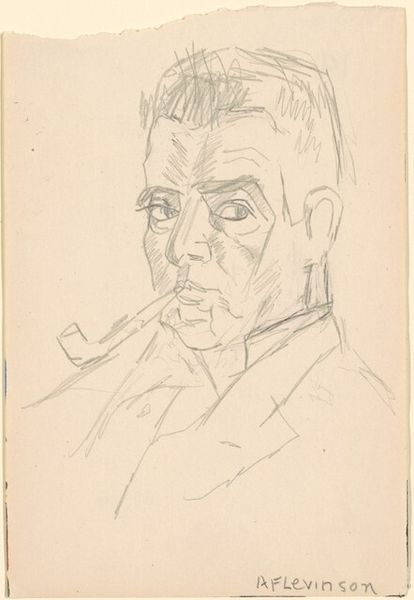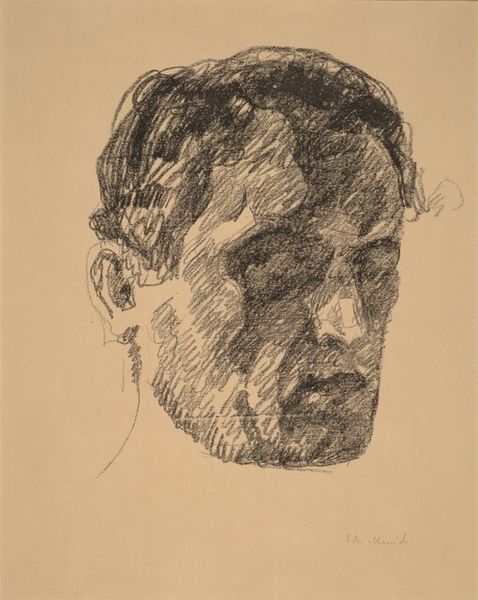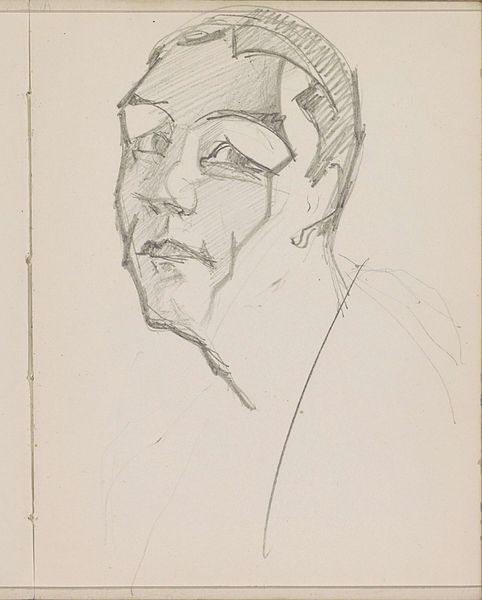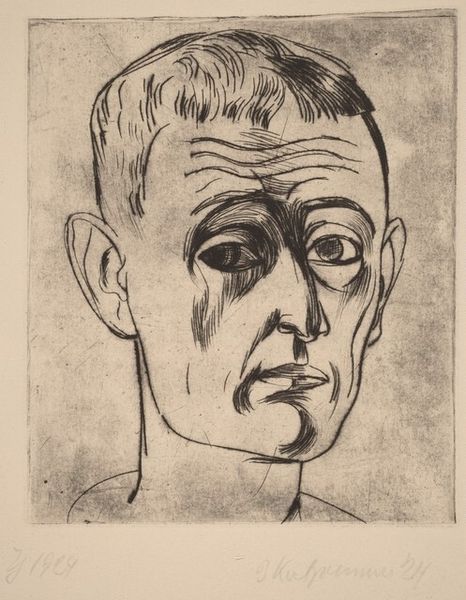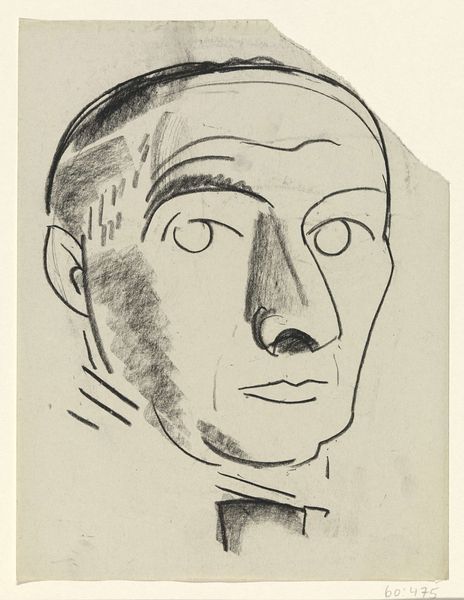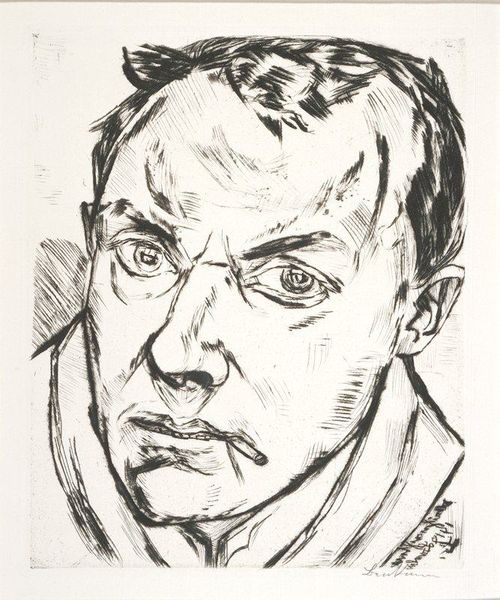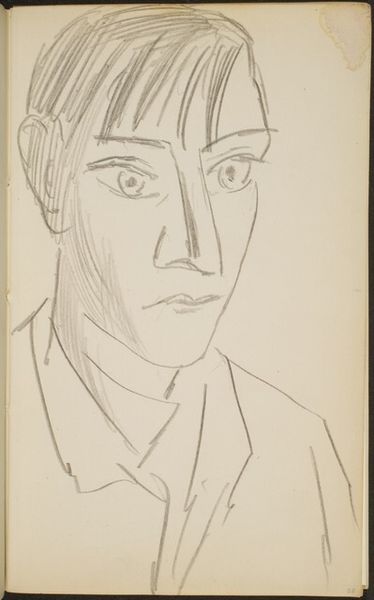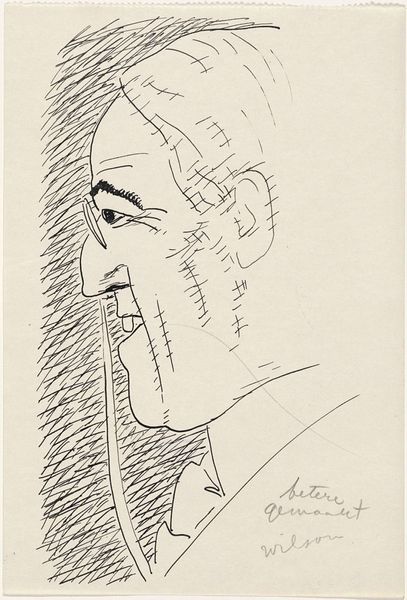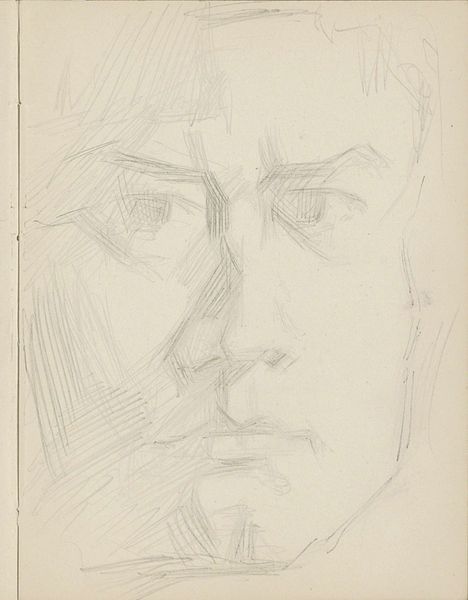
drawing, print, pencil
#
drawing
# print
#
pencil sketch
#
german-expressionism
#
pencil drawing
#
pencil
#
expressionism
#
portrait drawing
#
history-painting
#
portrait art
#
monochrome
Copyright: National Gallery of Art: CC0 1.0
Curator: Looking at this striking portrait by Edvard Munch, made with pencil around 1908 or 1909, entitled "The Actor Smith", the stark contrast really grabs you, doesn’t it? Editor: Absolutely, that high contrast emphasizes the play of light and shadow, creating an almost theatrical presence. There’s a rawness to the lines, suggesting a rapid execution, but also a profound depth of emotion captured. Curator: Exactly. The visible pencil strokes—the artistic process itself—become part of the subject's persona. Considering Munch's fascination with psychology and mental states, it makes me wonder if he’s exploring the performative aspects of identity, and how they become ingrained materially in our representation. Editor: The fact that Smith was an actor really strengthens that argument, wouldn't you say? What I find interesting is how this intersects with the social role of portraiture at the time. Whose image gets circulated? What power dynamics are at play in immortalizing a stage personality like this? It hints at the growing celebrity culture and how artists were responding. Curator: Right. Consider the production of imagery, generally, in early 20th-century Norway, particularly its relationship to the rising theatrical scene. This piece reflects an interest in celebrity that was emergent and fed a growing desire for visual spectacle. The labor behind image production, often disregarded, gives the pencil drawing an important presence of documentation. Editor: I’d argue that Smith's portrait underscores art’s ability to elevate a figure within the cultural consciousness. It raises the visibility, and the authority, of actors who contributed meaningfully to that consciousness. So, it also comments on how societal forces are involved with art's interpretation and value. Curator: I agree. The very act of choosing an actor as a subject demonstrates a move towards recognizing labor involved in image and role production within culture. Editor: Ultimately, it reminds us of how institutions and historical moments are entangled in forming the meaning we assign to artworks and figures within art. Curator: For me, it’s the connection of the raw medium with the representation of crafted performance, which illuminates our interpretation of self, society, and work.
Comments
No comments
Be the first to comment and join the conversation on the ultimate creative platform.
